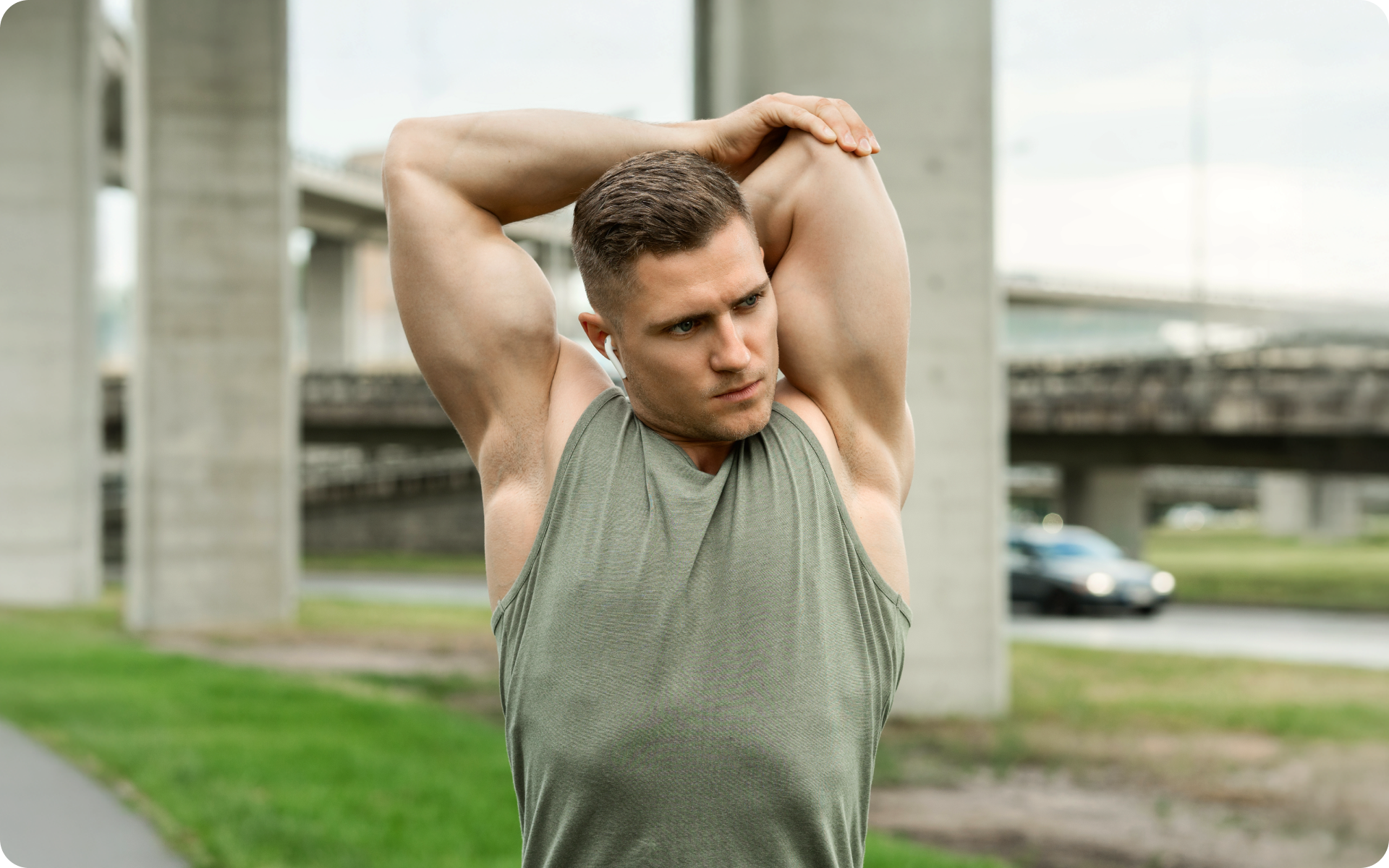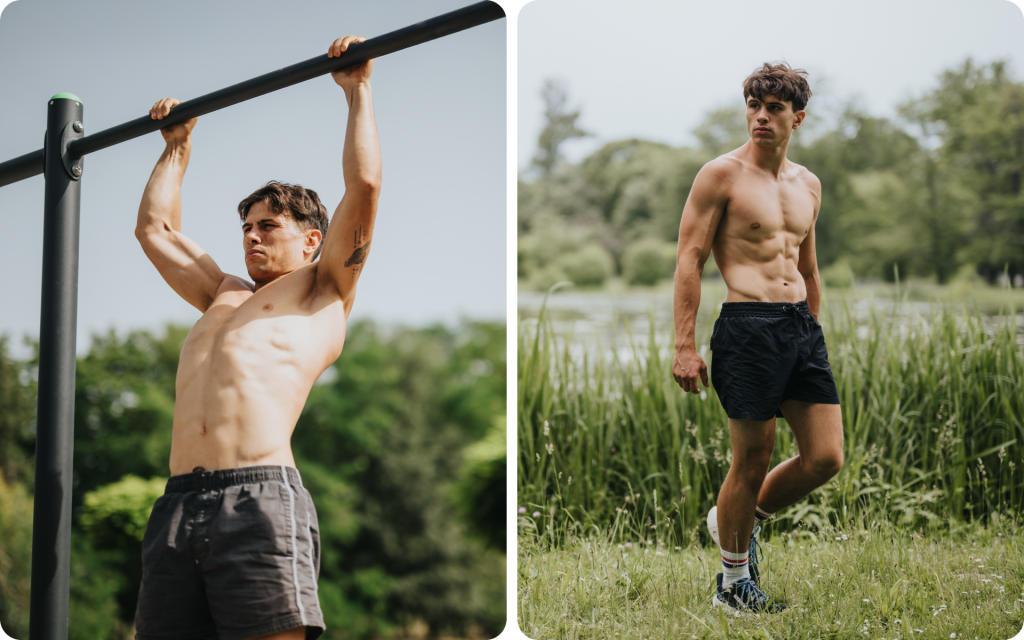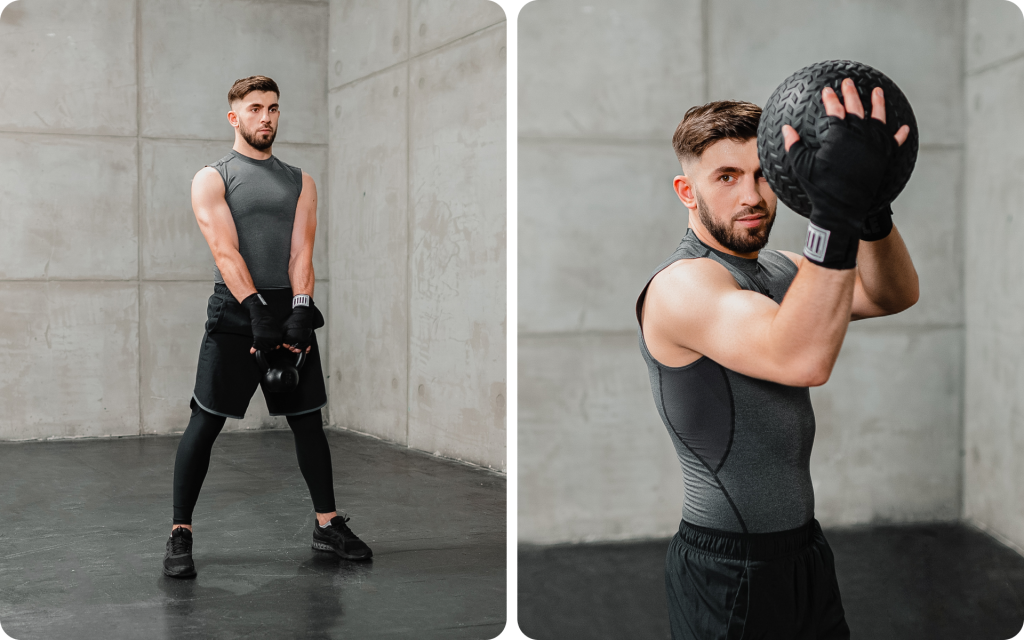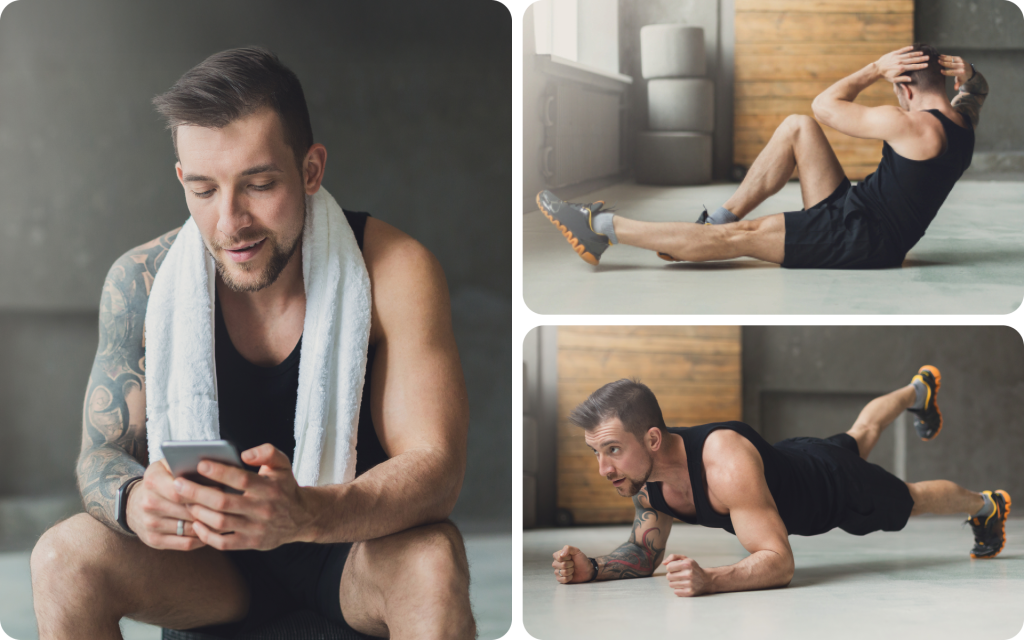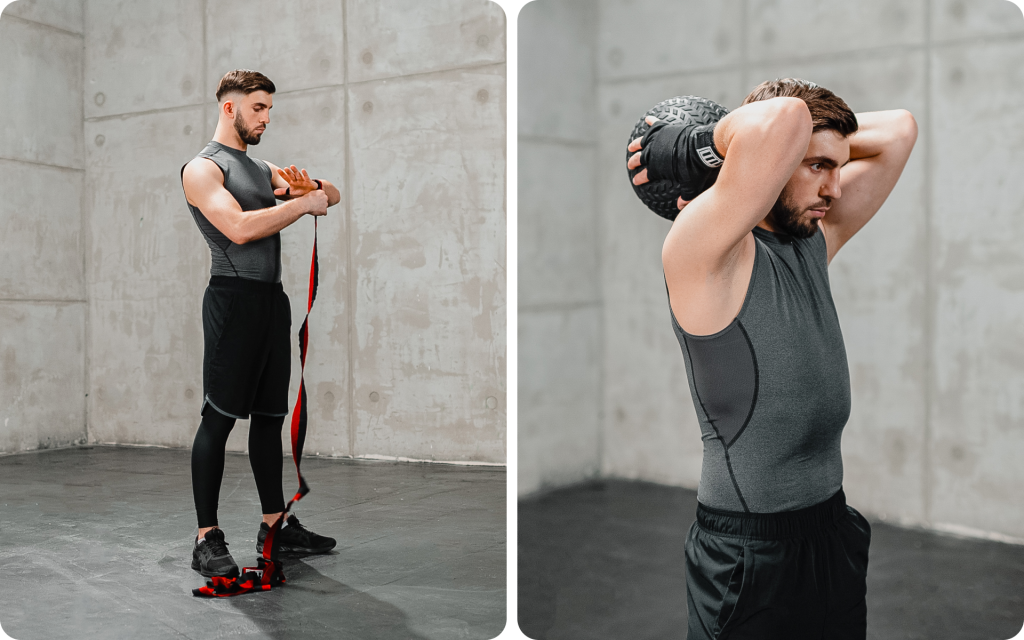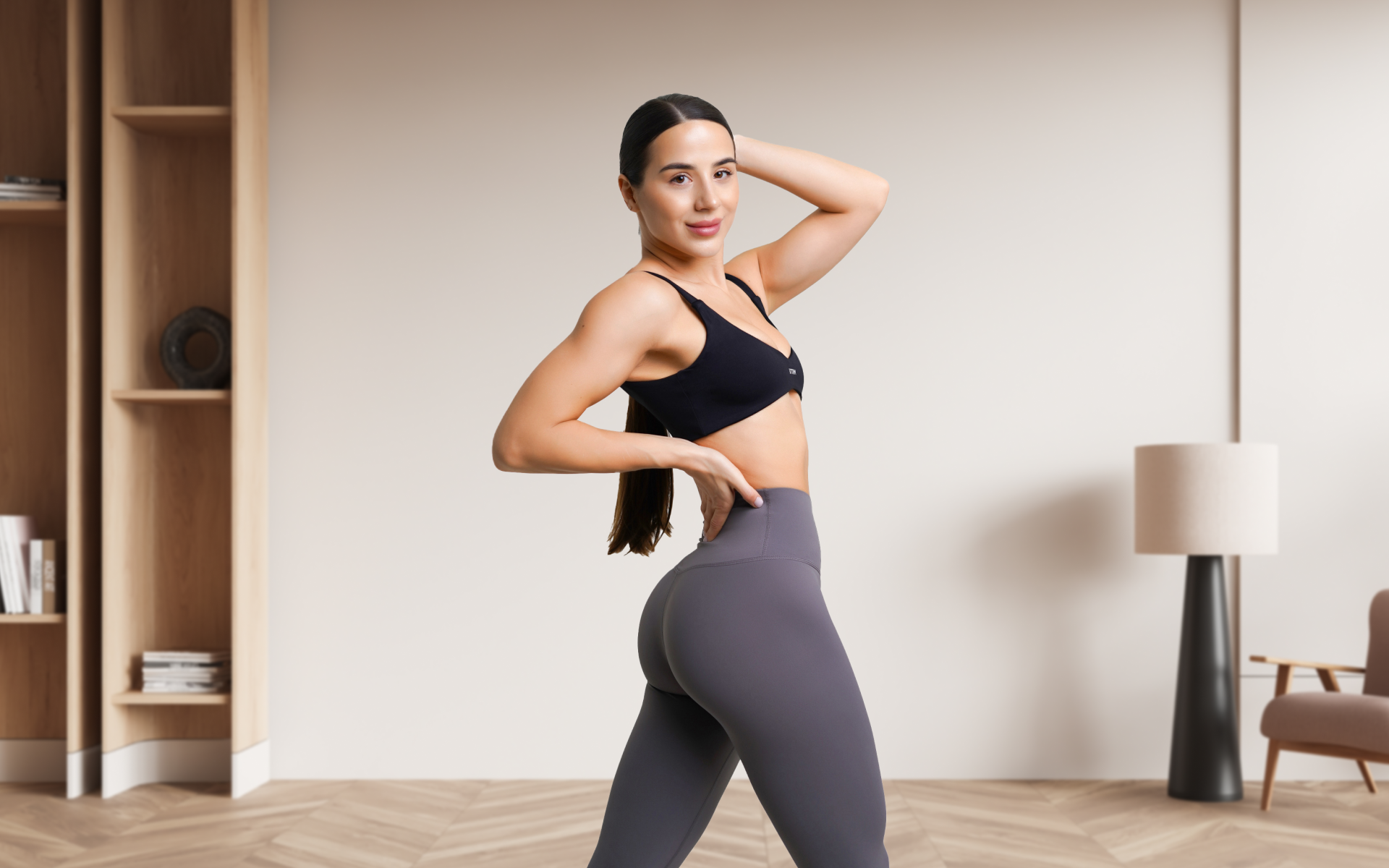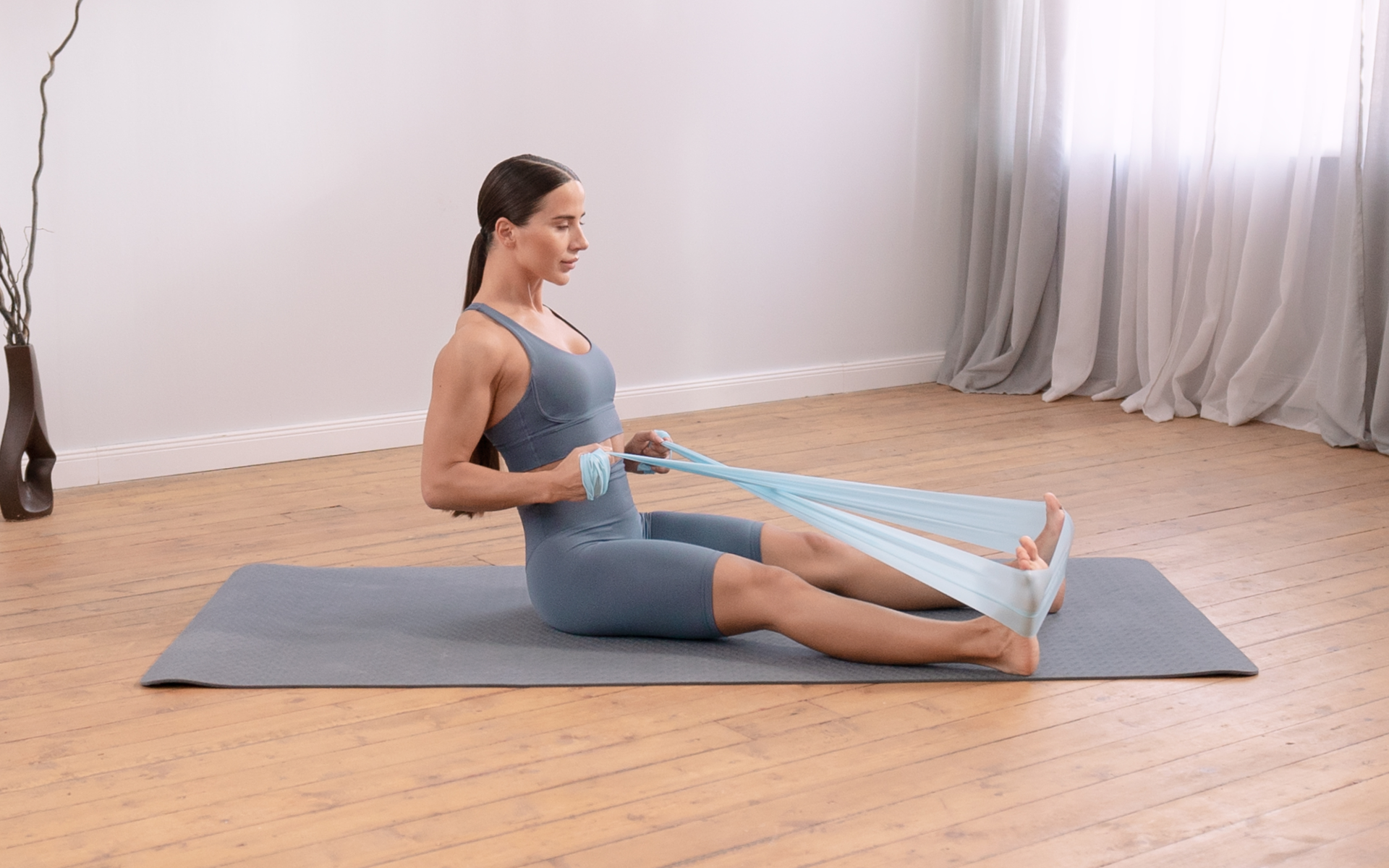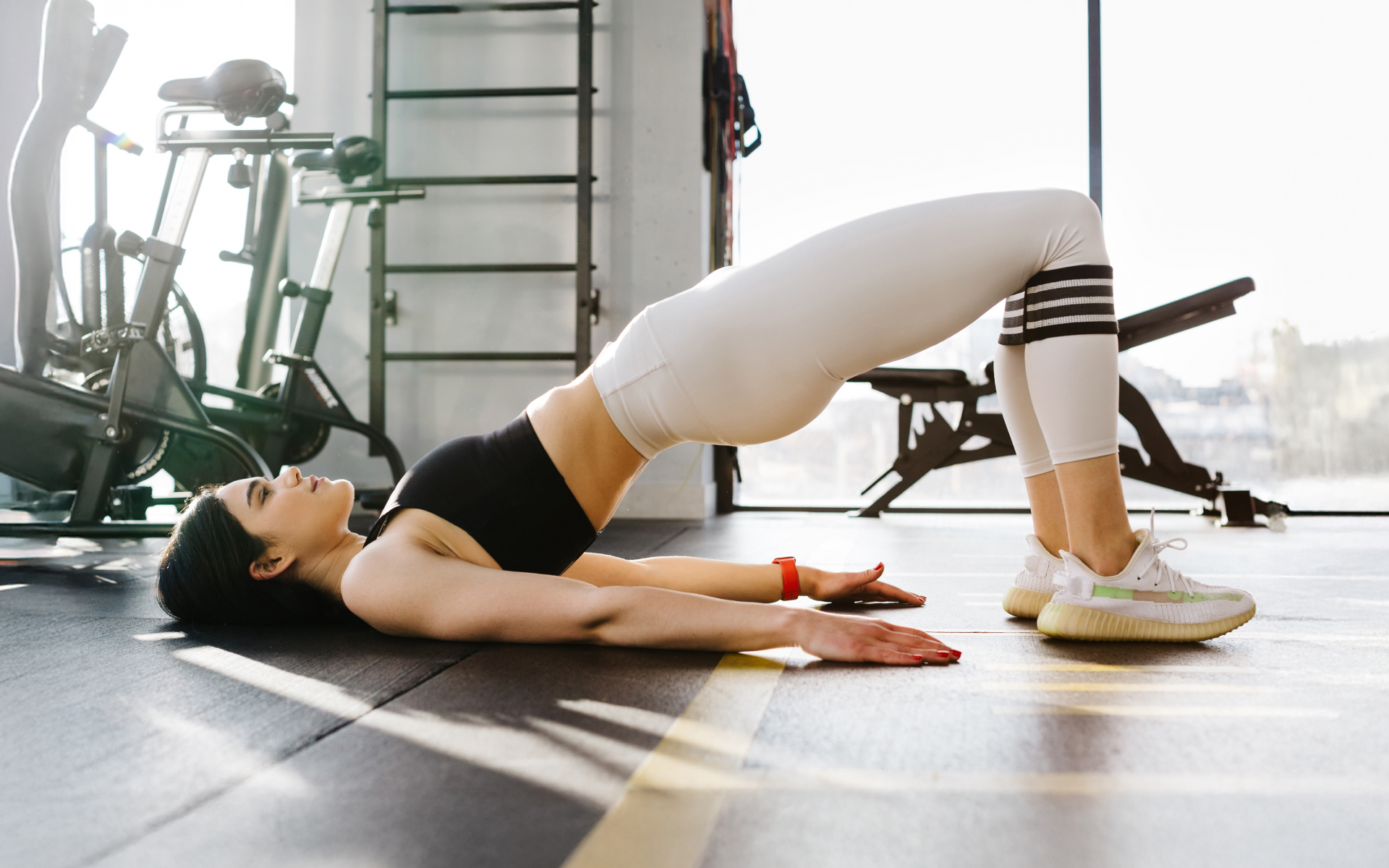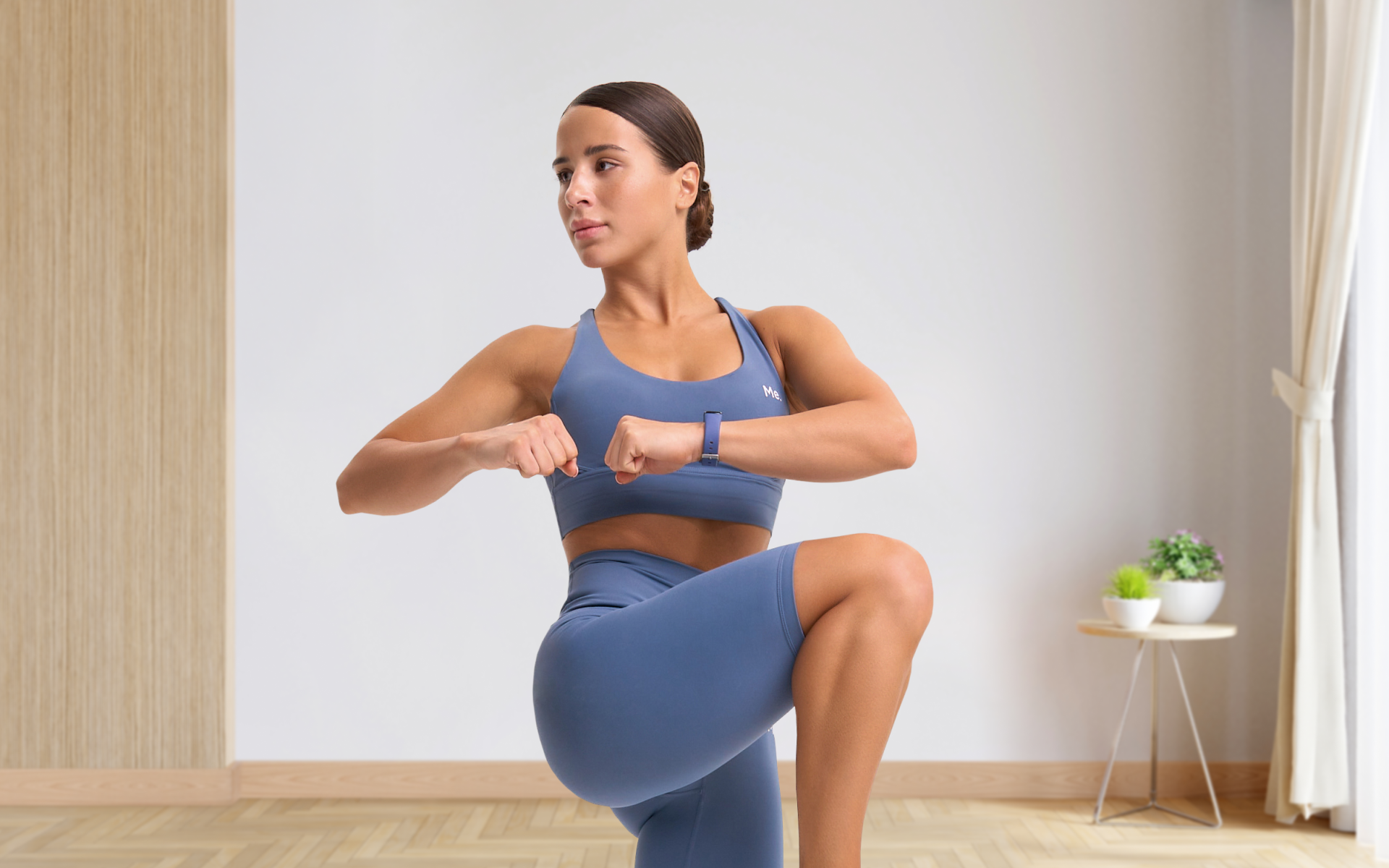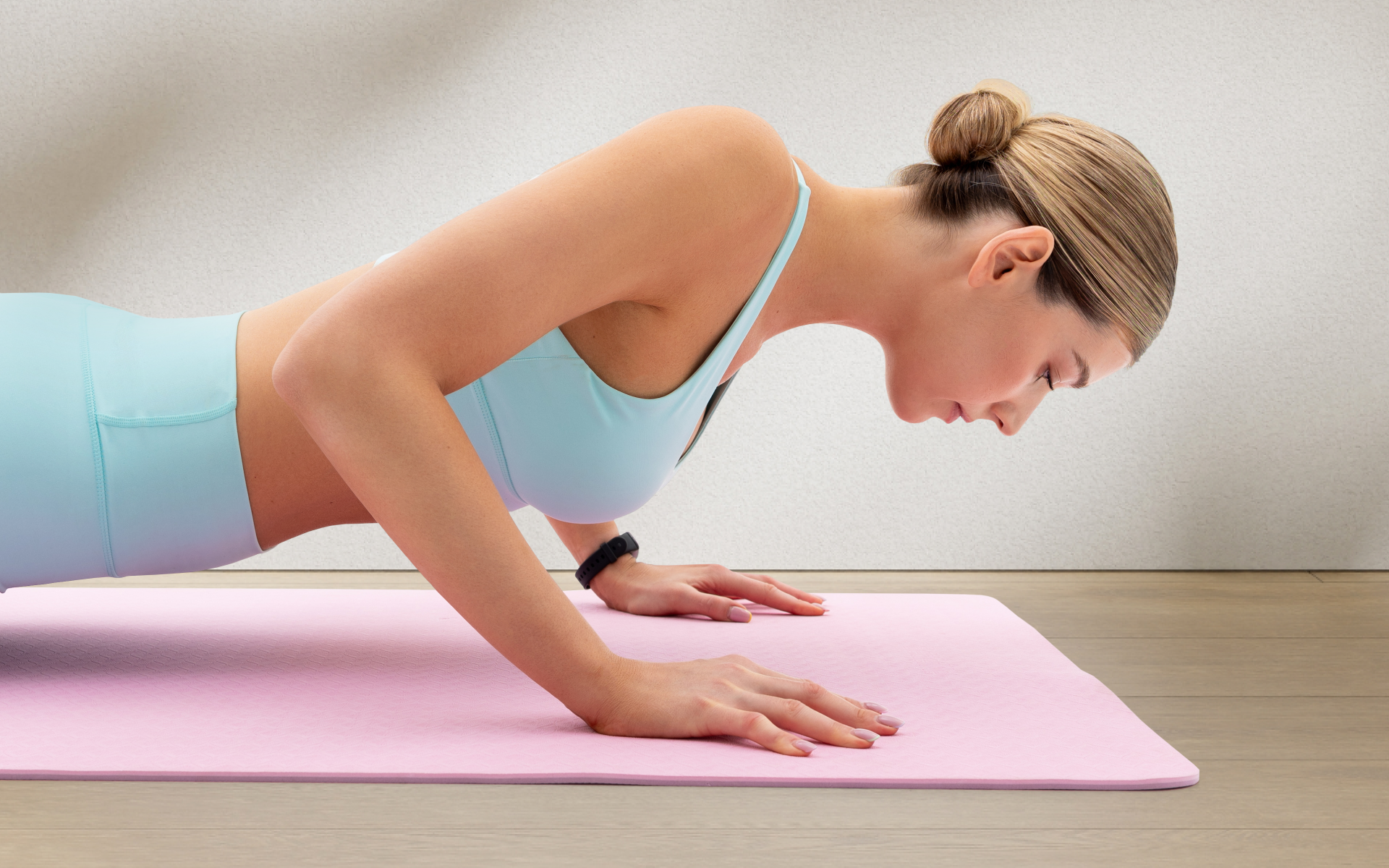Many people assume that building significant muscle mass requires heavy weights and complex equipment. However, emerging research and real-world applications have suggested that calisthenics can be a powerful tool for muscle growth when applied strategically (1). Understanding the principles behind muscle hypertrophy and how calisthenics fits into this equation will help you make informed decisions relating to your training approach.
Can You Really Build Muscle with Calisthenics?
The short answer is yes, but the full story requires understanding the fundamental principles of muscle hypertrophy. Muscle growth occurs when three key factors are aligned: mechanical tension, metabolic stress, and muscle damage. Traditional weightlifting isn’t the only path to achieving these conditions.
Calisthenics exercises create mechanical tension through bodyweight resistance. When you perform a pull-up, your muscles work against your body weight, creating the necessary stimulus for growth (2). Progressive overload – the gradual increase in training demands – remains the cornerstone of muscle development (3), regardless of whether you’re using barbells or your body weight.
Research published in the Journal of Sport and Health Science demonstrates that resistance training intensity, rather than the specific type of resistance, primarily determines muscle growth outcomes (4). This means that challenging calisthenics exercises can stimulate muscle protein synthesis just as effectively as traditional weight training when performed with adequate intensity and volume.
The key lies in progression. While a beginner may struggle with standard push-ups, advanced practitioners can perform archer push-ups, one-arm push-ups, or weighted variations. This scalability allows for continuous adaptation and growth stimulus over time.
However, achieving significant muscle mass through calisthenics requires strategic planning and understanding of exercise selection. Not all bodyweight movements are created equal when it comes to muscle-building potential.
Our previous post goes into great detail about calisthenics for skinny guys.
What Muscles Do Calisthenics Work Out?
Calisthenics exercises excel at targeting multiple muscle groups simultaneously, which creates functional strength patterns that translate well to real-world movements (2). Understanding which muscles respond best to bodyweight training helps you optimize your routine design.
- Upper Body Development
Pull-ups and their variations effectively target the latissimus dorsi, rhomboids, middle trapezius, and biceps. These exercises develop significant strength in the upper-back muscles while engaging the core for stability. The compound nature of pull-ups means multiple muscle groups work together, and this creates a more comprehensive training stimulus (5).
Push-ups and their progressions target the pectorals, anterior deltoids, and triceps. Hand planks and various push-up variations develop strength in the shoulder stabilizers while challenging the core musculature (6). The versatility of push-up modifications allows different areas of the chest to be targeted and varying intensity levels.
BetterMe will shake off your mental funk, rid you of your energy-zapping habits, and help you sculpt the body of your dreams. Intrigued? Hurry up and change your life for the better!
- Lower Body Strength
Bodyweight squats, lunges, and single-leg exercises effectively develop the quadriceps, hamstrings, and gluteal muscles. These movements also engage the core and stabilizing muscles throughout the kinetic chain (7, 8). Single-leg exercises such as walking lunges provide unilateral training benefits that can address muscle imbalances and improve functional movement patterns. For more details about calisthenics to build muscle, take a look at our prior publication.
- Core Integration
One of the greatest advantages of calisthenics is the constant core engagement required for most exercises. Hand planks and elbow planks develop strength and stability in the abdominal, back, and shoulder areas (9). This integrated approach to core training creates functional strength that supports all movement patterns.
The multi-muscle engagement characteristic of resistance training such as calisthenics creates metabolic stress through sustained muscle contractions and oxygen demand (10). This metabolic component contributes to muscle growth and cardiovascular conditioning simultaneously.
Read more: Men’s Calisthenics Workout: 8 Exercises to Build a Lean Physique
What Muscles Does Calisthenics Neglect?
While calisthenics offers comprehensive training for many muscle groups, certain areas may not receive optimal stimulation through bodyweight exercises alone. An understanding of these limitations will help create a more balanced training approach.
Posterior Chain Development
The posterior chain, which includes the hamstrings, glutes, and erector spinae, can be challenging to target effectively with standard calisthenics. While single-leg squats and lunges engage these muscles, they may not provide sufficient loading for optimal development in more advanced trainees.
Traditional deadlift patterns, which are excellent for posterior chain development, cannot be easily replicated with bodyweight alone. This limitation may require creative exercise selection (such as the Nordic curl) or the addition of external resistance for complete development.
Isolated Muscle Groups
Calisthenics naturally favors compound movements over isolation exercises. While this approach builds functional strength, it may not provide optimal development for specific muscle groups that benefit from targeted training.
For example, the calves receive minimal stimulation from most calisthenics exercises. Similarly, the neck muscles, certain portions of the deltoids, and specific areas of the back may not receive adequate training volume through bodyweight exercises alone.
Loading Limitations
As you become stronger, progressing certain calisthenics exercises becomes increasingly challenging. While you can add external weight to many bodyweight exercises, pure calisthenics may eventually reach a ceiling for muscle growth in certain individuals (11).
The loading curve for muscle growth typically requires progressive increases in resistance over time. Advanced practitioners may find that bodyweight alone doesn’t provide sufficient resistance for continued growth in certain muscle groups.
Does Calisthenics Make You Lean or Bulky?
The relationship between calisthenics and body composition depends more on training variables, nutrition, and individual factors than on the exercise modality itself. Understanding these relationships helps set realistic expectations and training goals.
- Training Variables Impact
High-repetition calisthenics training with shorter rest periods tends to emphasize muscular endurance and cardiovascular conditioning (11, 12). This approach may contribute to a leaner physique through increased caloric expenditure and metabolic conditioning effects.
Conversely, low-repetition, high-intensity calisthenics progressions with longer rest periods can stimulate muscle hypertrophy that is similar to that which is achieved through traditional strength training. The key difference lies in how you structure your training variables rather than the exercises themselves.
- Nutritional Considerations
Body composition changes result from the interaction between training stimulus and nutritional intake (13, 14). Calisthenics practitioners who maintain a caloric deficit will likely develop a leaner physique, while those who eat in a surplus may build more muscle mass.
The protein requirements for muscle growth remain consistent regardless of training modality. Adequate protein intake supports muscle protein synthesis, whether you’re training with weights or bodyweight exercises (15).
- Individual Response Factors
Genetic factors, training history, and hormonal profile influence how individuals respond to different training stimuli. Some people naturally build muscle more easily, while others excel at developing strength and power.
The perception that calisthenics athletes appear “lean” may result from the functional strength requirements of advanced bodyweight skills. Excessive muscle mass can sometimes hinder certain calisthenics movements, which leads to practitioners maintaining lower body fat percentages and moderate muscle mass.
Read more: Lean Calisthenics Body Weight Workout for Beginners
Is Calisthenics Better than Lifting Weights for Building Muscle?
Comparing calisthenics to traditional weightlifting for muscle growth requires examining the advantages and limitations of each approach. The optimal choice depends on your goals, preferences, and circumstances.
Calisthenics Advantages
Accessibility stands as the greatest advantage of calisthenics. You can train anywhere without equipment, which makes consistency easier to maintain. This accessibility often leads to better long-term adherence, which ultimately determines training success.
The functional movement patterns developed through calisthenics translate well to daily activities and athletic performance. The integrated core strengthening and stability requirements of bodyweight exercises create comprehensive fitness development (16).
Calisthenics also offers excellent scalability. Beginners can start with basic movements and progress to advanced skills over time. This progression path provides clear goals and motivation for continued training.
Weightlifting Advantages
Traditional weightlifting offers precise loading control, which allows for exact progression increments. This precision makes it easier to apply progressive overload principles consistently over time (17).
The ability to isolate specific muscle groups through weightlifting can address weaknesses and create more balanced development. This targeted approach may be beneficial for physique development or addressing specific deficits.
Equipment variety in weightlifting allows for diverse training stimuli and movement patterns. Different implements can target muscles from various angles and with different resistance profiles. If you’re curious about weighted calisthenics, check out our earlier article.
Practical Considerations
The best approach for muscle building may involve combining elements of both training modalities. Many successful athletes and fitness enthusiasts use calisthenics as their foundation while incorporating strategic weightlifting to address specific needs.
Your training environment, available time, and personal preferences should influence your choice. Consistency remains the most important factor for long-term success, regardless of the specific exercises you choose.
Progression Strategies
Both calisthenics and weightlifting require progressive overload for continued muscle growth. Calisthenics achieves this through exercise progressions, increased volume, or added resistance. Weightlifting typically progresses through increased load, volume, or training frequency.
The key is to choose an approach that allows for consistent progression over time while maintaining proper form and avoiding injury.
Reasons why BetterMe is a safe bet: a wide range of calorie-blasting workouts, finger-licking recipes, 24/7 support, challenges that’ll keep you on your best game, and that just scratches the surface! Start using our app and watch the magic happen.
How Long Does Calisthenics Take to See Results?
The time it takes to see results from calisthenics depends on several factors, including your starting fitness level, consistency, and the intensity of your workouts. Improvements in coordination, balance, and strength may be apparent in a few weeks. Bigger muscles and advanced skills require months or even sometimes years of consistent practice to show.
A general timeline of results you may see is below:
1. Initial Adaptations (1-4 Weeks):
- Neuromuscular Improvements: Beginners often notice better coordination, balance, and control within the first few weeks. This is due to the nervous system adapting to new movement patterns.
- Strength Gains: Early strength improvements are primarily neurological, as your body learns to recruit muscle fibers more efficiently.
2. Visible Changes (4-12 Weeks):
- Muscle Definition: With consistent training (3-5 sessions per week), you may start to see increased muscle tone and definition, particularly in the upper body and core.
- Fat Loss: If combined with a calorie-controlled diet, calisthenics can contribute to fat loss, which makes muscle definition more apparent.
3. Significant Strength and Hypertrophy (3-6 Months):
- Muscle Growth: Progressive overload (e.g. increasing reps, sets, or difficulty of exercises such as moving from push-ups to one-arm push-ups) leads to noticeable muscle hypertrophy.
- Strength Milestones: You may achieve advanced calisthenics moves such as pull-ups, dips, or even handstands, depending on your starting point.
4. Long-Term Mastery (6+ Months):
- Advanced Skills: With dedication, you can master complex movements such as muscle-ups or planches, which require significant strength and control.
- Sustainable Fitness: Calisthenics builds functional strength and endurance, which can be maintained for life.
To keep you progressing at a motivating pace, pay attention to the following factors:
- Training Frequency: Studies suggest that training a muscle group 2-3 times per week is optimal for hypertrophy and strength gains.
- Progressive Overload: Gradually increasing the difficulty of exercises is essential for continued progress.
- Diet and Recovery: Adequate protein intake (1.6-2.2g/kg of body weight) and sleep (7-9 hours per night) significantly impact results.
Calisthenics athletes often develop a lean and defined physique due to the high level of muscular engagement that is involved in these exercises. Unlike isolated weightlifting movements, calisthenics engages multiple muscle groups simultaneously, which promotes greater calorie burn and functional strength. Over time, this wide-ranging engagement helps build muscle density and creates a “ripped” appearance. These athletes also tend to maintain low body fat percentages through diet, as many exercises require the use of your own body weight. This combination of lean muscle mass and low body fat can result in a chiseled and defined look. You can build significant strength using only calisthenics. Strength gains in calisthenics come from progressively challenging your muscles with harder variations of exercises. For example, moving from standard push-ups to one-arm push-ups, or from standard pull-ups to muscle-ups, provides the progressive overload necessary to stimulate muscle growth and strength. Furthermore, calisthenics builds functional strength (2), which is your ability to control and move your body effectively in real-world scenarios (18). Exercises such as pull-ups, dips, and planks strengthen key muscle groups while improving stability and coordination. With proper progression and consistency, calisthenics can match or even surpass the strength-building effects of traditional weightlifting. A typical calisthenics workout should last anywhere from 30 to 60 minutes, depending on your fitness level and goals. Beginners may start with shorter sessions to build endurance and technique, while advanced practitioners can extend workouts by adding more sets, reps, or complex exercises. Short, high-intensity calisthenics sessions, such as circuit training, can be particularly effective for boosting both strength and cardiovascular fitness. For those who are focused on mastering advanced skills (such as planches or handstands), additional time is often required to practice technique and build muscle endurance. Regardless of the duration, quality and consistency are more important than sheer length for achieving results. Your diet during calisthenics should focus on supporting muscle repair, growth, and energy levels. Here are the essentials (19): Timing is also important. A balanced meal 2-3 hours before training and a protein-rich snack afterward (e.g. a smoothie with protein powder and fruit) can enhance recovery and performance.Frequently Asked Questions
Why are calisthenics guys so ripped?
Can you get strong with only calisthenics?
How long should a calisthenics workout last?
What should I eat during calisthenics?
The Bottom Line
Calisthenics can effectively build muscle when applied with proper programming principles. The key factors for success include progressive overload, adequate training volume, proper nutrition, and consistent application over time.
For most people, calisthenics provides an excellent foundation for muscle development, functional strength, and overall fitness. The accessibility and scalability make it an attractive option for long-term training success.
However, acknowledging the limitations helps create realistic expectations and potentially supplements your training when necessary. Advanced practitioners may benefit from incorporating external resistance or targeted exercises in order to address specific development needs.
The most effective approach should be aligned with your lifestyle, preferences, and goals. Whether you choose pure calisthenics, traditional weightlifting, or a combination of both, consistency and progressive application are the determining factors for success.
You should focus on mastering fundamental movement patterns, gradually increasing the challenge over time, and maintaining proper nutrition to support your muscle-building goals. The specific tools matter less than how consistently and intelligently you apply them.
DISCLAIMER:
This article is intended for general informational purposes only and does not serve to address individual circumstances. It is not a substitute for professional advice or help and should not be relied on for making any kind of decision-making. Any action taken as a direct or indirect result of the information in this article is entirely at your own risk and is your sole responsibility.
BetterMe, its content staff, and its medical advisors accept no responsibility for inaccuracies, errors, misstatements, inconsistencies, or omissions and specifically disclaim any liability, loss or risk, personal, professional or otherwise, which may be incurred as a consequence, directly or indirectly, of the use and/or application of any content.
You should always seek the advice of your physician or other qualified health provider with any questions you may have regarding a medical condition or your specific situation. Never disregard professional medical advice or delay seeking it because of BetterMe content. If you suspect or think you may have a medical emergency, call your doctor.
SOURCES:
- The effects of a calisthenics training intervention on posture, strength and body composition (2017, journals.sagepub.com)
- Bodyweight Training: A Return To Basics (2010, journals.lww.com)
- Progressive overload without progressing load? The effects of load or repetition progression on muscular adaptations (2022, pmc.ncbi.nlm.nih.gov)
- The influence of resistance exercise training prescription variables on skeletal muscle mass, strength, and physical function in healthy adults: An umbrella review (2024, sciencedirect.com)
- The Pull-up (2014, journals.lww.com)
- Selective Activation of Shoulder, Trunk, and Arm Muscles: A Comparative Analysis of Different Push-Up Variants (2015, pmc.ncbi.nlm.nih.gov)
- A Biomechanical Review of the Squat Exercise: Implications for Clinical Practice (2024, pmc.ncbi.nlm.nih.gov)
- Hip-Muscle Activation During the Lunge, Single-Leg Squat, and Step-Up-and-Over Exercises (2009, researchgate.net)
- Core Muscle Activity during Physical Fitness Exercises: A Systematic Review (2020, pmc.ncbi.nlm.nih.gov)
- Role of metabolic stress for enhancing muscle adaptations: Practical applications (2017, pmc.ncbi.nlm.nih.gov)
- Bodyweight Training for Muscular Strength & Endurance (2022, researchgate.net)
- Simple Bodyweight Training Improves Cardiorespiratory Fitness with Minimal Time Commitment: A Contemporary Application of the 5BX Approach (2021, pmc.ncbi.nlm.nih.gov)
- CHANGES IN BODY COMPOSITION INDUCED BY DIET AND EXERCISE (2018, researchgate.net)
- Impact of resistance training intensity on body composition and nutritional intake among college women with overweight and obesity: a cluster randomized controlled trial (2025, frontiersin.org)
- Recent Perspectives Regarding the Role of Dietary Protein for the Promotion of Muscle Hypertrophy with Resistance Exercise Training (2018, pmc.ncbi.nlm.nih.gov)
- The advantages of body-weight exercise (2024, health.harvard.edu)
- Strength Training (n.d., physio-pedia.com)
- Effects of Functional Strength Training on Functional Movement and Balance in Middle-Aged Adults (2021, mdpi.com)
- 5 nutrition tips to maximize workouts (2025, mayoclinichealthsystem.org)
- International Society of Sports Nutrition Position Stand: protein and exercise (2017, jissn.biomedcentral.com)
